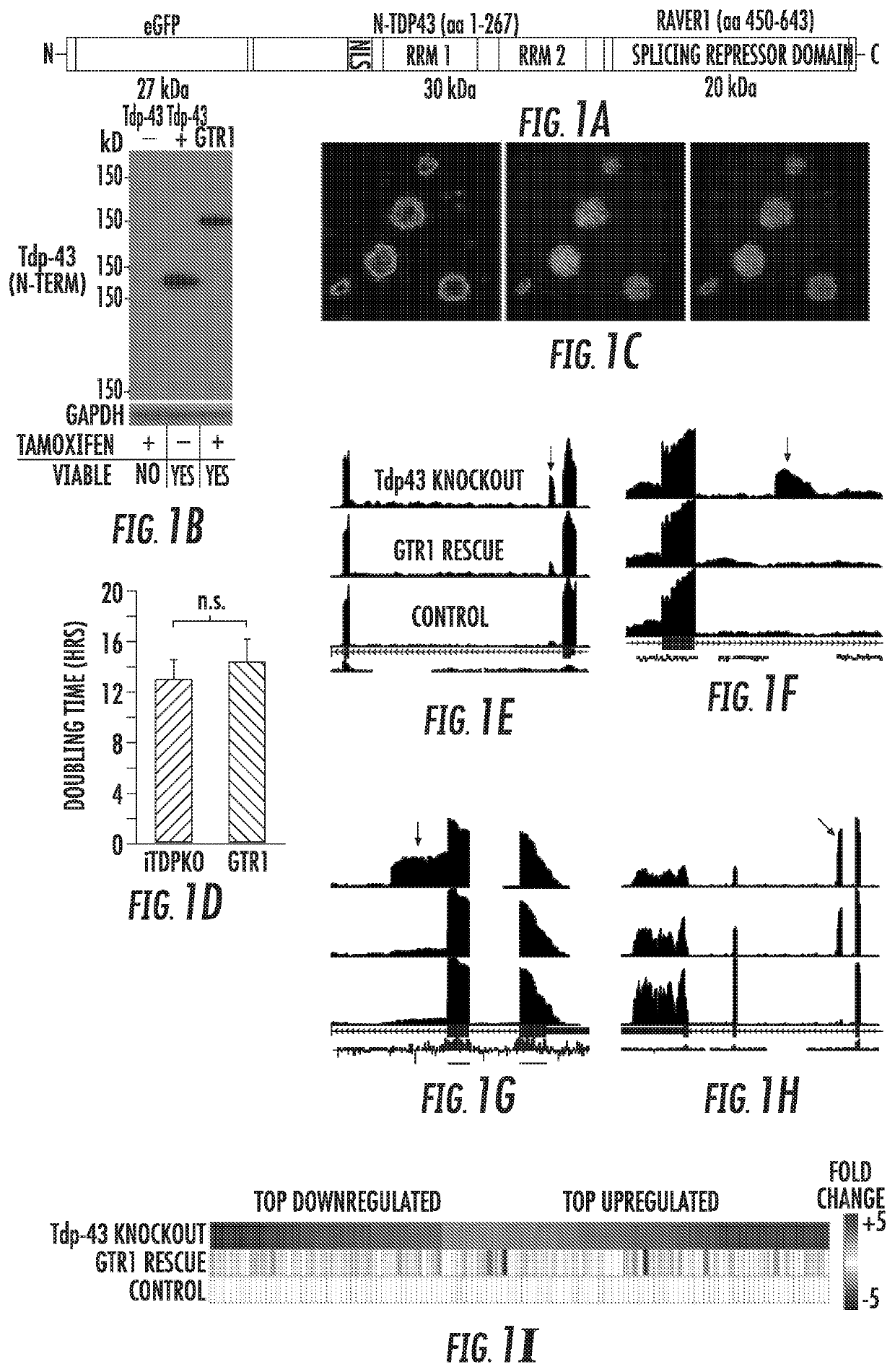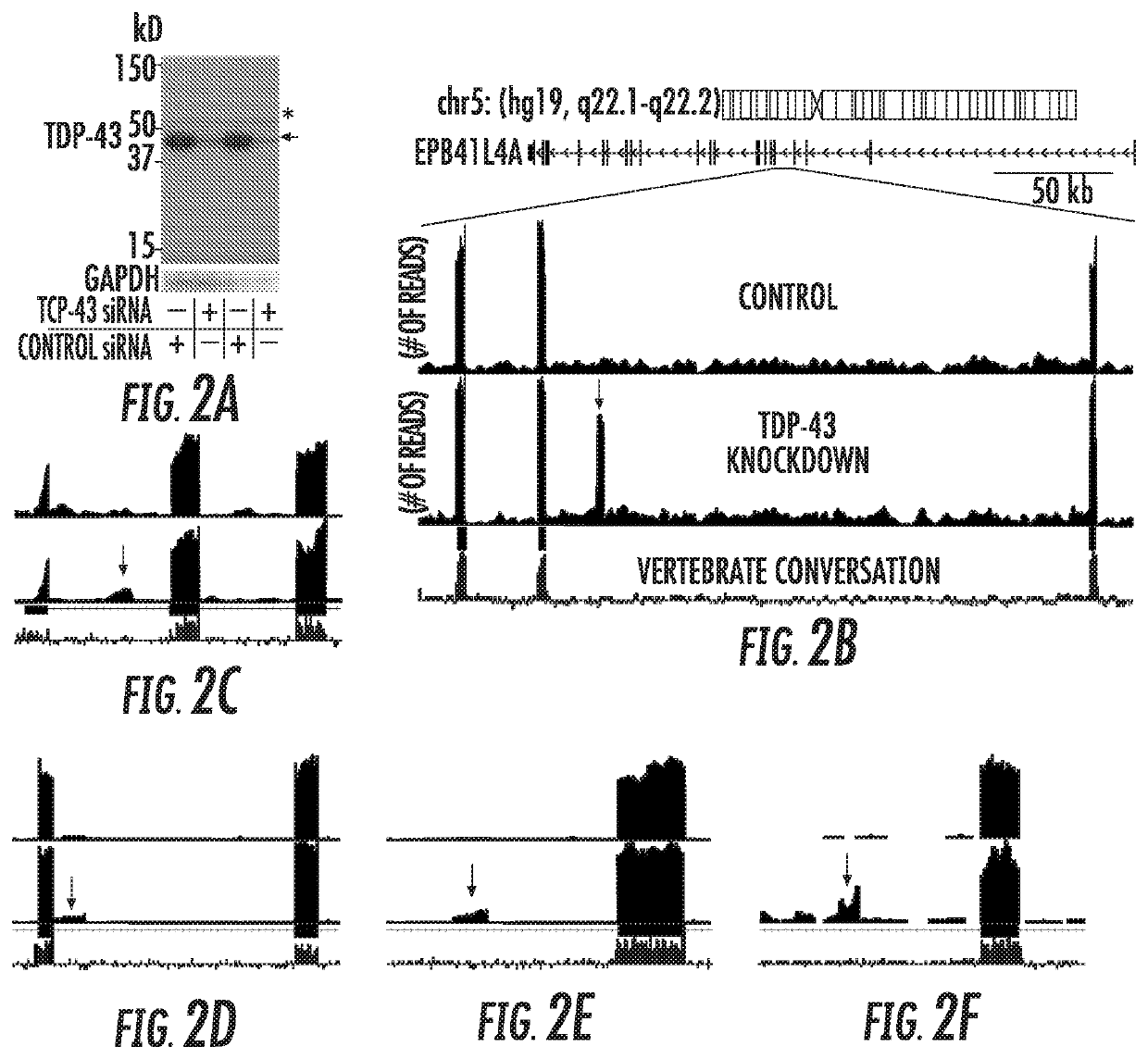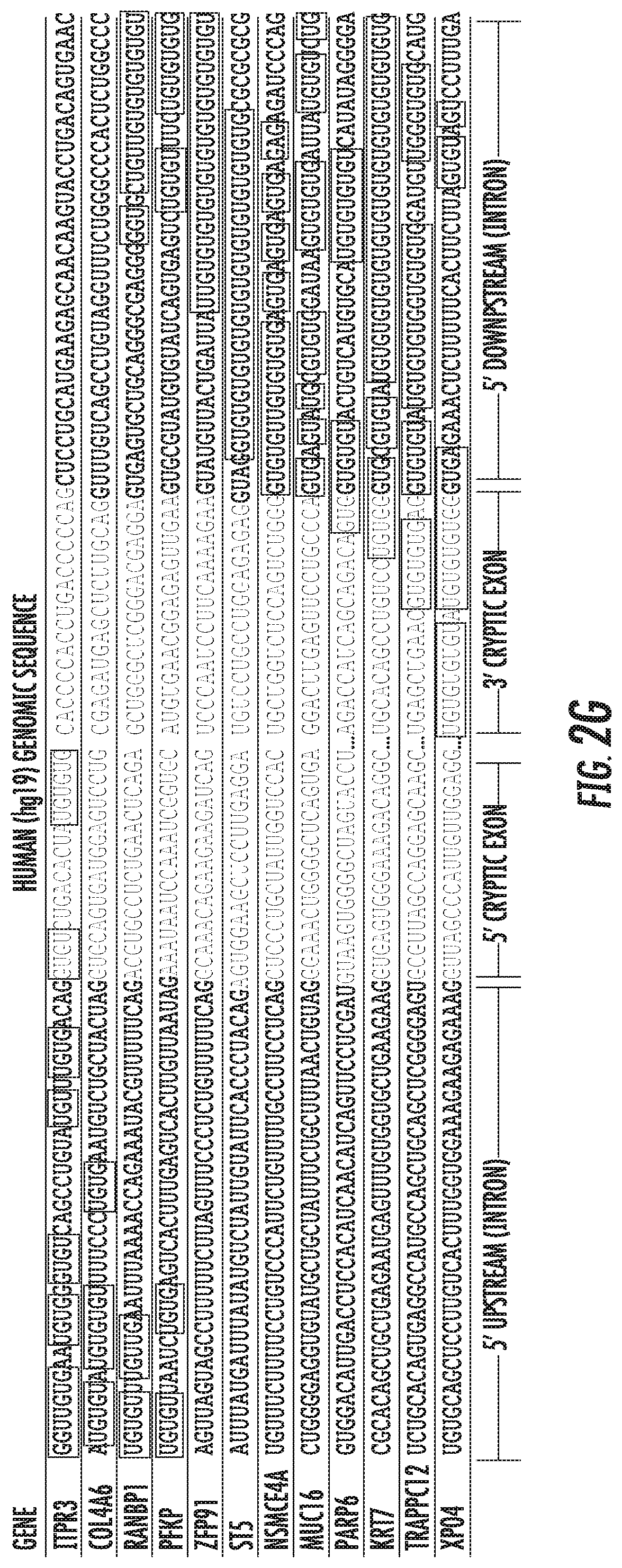TDP-43 in degenerative disease
a degenerative disease and tdp43 technology, applied in the field of tdp43 in degenerative diseases, can solve problems such as premature stop codon introduction
- Summary
- Abstract
- Description
- Claims
- Application Information
AI Technical Summary
Benefits of technology
Problems solved by technology
Method used
Image
Examples
Embodiment Construction
[0038]The following description is provided to enable any person skilled in the art to make and use the invention and sets forth the best modes contemplated by the inventor of carrying out his invention. Various modifications, however, will remain readily apparent to those skilled in the art, since the general principles of the present invention have been defined herein specifically to provide detection and treatment of certain degenerative diseases.
[0039]Cytoplasmic aggregation of TDP-43, accompanied by its nuclear clearance, is a key common pathological hallmark of amyotrophic lateral sclerosis and frontotemporal dementia (ALS-FTD). However, a limited understanding of this RNA-binding protein (RBP) impedes the clarification of pathogenic mechanisms underlying TDP-43 proteinopathy. In contrast to RBPs that regulate splicing of conserved exons, the present invention identifies that TDP-43 suppresses the splicing of non-conserved cryptic exons. When TDP-43 is depleted from the cell, ...
PUM
| Property | Measurement | Unit |
|---|---|---|
| capacitance | aaaaa | aaaaa |
| voltage | aaaaa | aaaaa |
| size | aaaaa | aaaaa |
Abstract
Description
Claims
Application Information
 Login to View More
Login to View More - R&D
- Intellectual Property
- Life Sciences
- Materials
- Tech Scout
- Unparalleled Data Quality
- Higher Quality Content
- 60% Fewer Hallucinations
Browse by: Latest US Patents, China's latest patents, Technical Efficacy Thesaurus, Application Domain, Technology Topic, Popular Technical Reports.
© 2025 PatSnap. All rights reserved.Legal|Privacy policy|Modern Slavery Act Transparency Statement|Sitemap|About US| Contact US: help@patsnap.com



